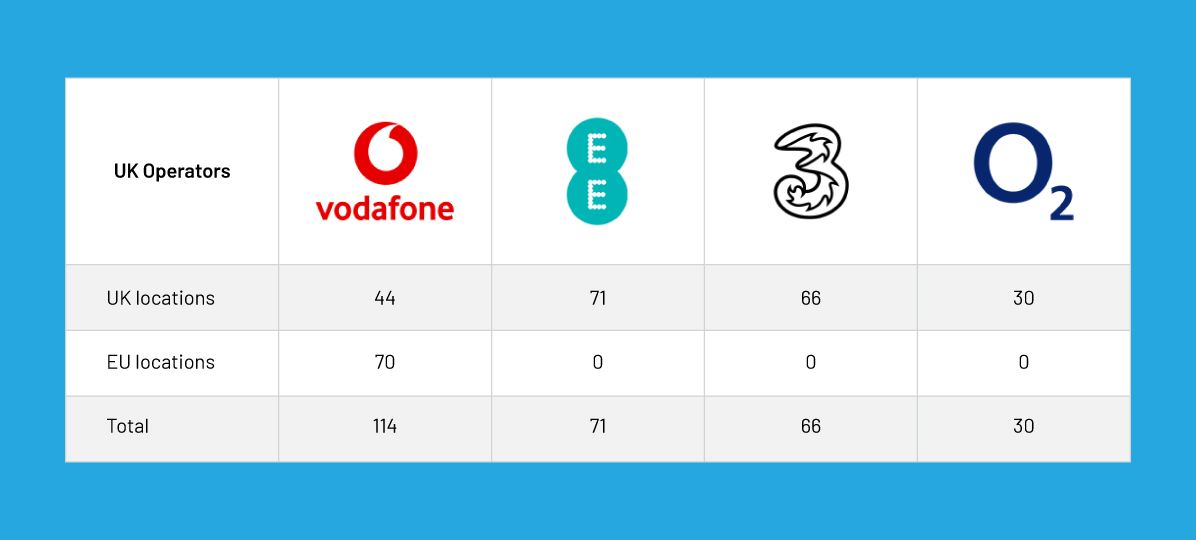5G: FluidOne’s View

Technological progression has been so rapid over the past few years that mobile devices and products that were first launched 10 (and in some cases, 5) years ago, seem incredibly outdated. It’s amazing to think that it was just 20 years ago that the first mobile phone with a digital camera was launched by Sharp, with a pretty unimpressive 0.11 megapixels. 10 years later, the first revolutionary Galaxy S was launched with 16GB of storage and a 5-megapixel camera, whilst the latest iPhone 11 has up to 512GB of storage, three 12-megapixel cameras, 4K video recording and a list of features that would take me hours to run through.
There has been a lot of discussion about the rollout, or lack thereof, of 5G. As users, we now expect rapid progression, we’ve become so used to being online instantly, everywhere, consuming more and more data year on year and needing a new handset to cope with our increasing requirements every 2 years. To think that just 5 years ago Blackberry had amassed 190M users on their incredibly popular BBM service, a mere drop in the ocean compared to the 1.5Bn active WhatsApp users today, think of how much more data is consumed as a result of this one app. Users are looking to be supported in their quest for better connectivity, with 3G we had emails on the move, with 4G, that first launched commercially just 8 years ago in 2012, everything was faster and faster but with 5G, we’ll be able to power cities and ride in driverless cars, the step change is vast.
So, why is everyone so excited about 5G and what does it mean for now and for the future?
5G will provide low latency connectivity with a greater capacity than ever. This is perfectly aligned with the growing usage of cloud-based applications - it is estimated that consumers and business users are connected to 18% more cloud apps now than they were in 2019. This has likely been heightened by the global pandemic but we expect this to continue to grow as businesses adopt more hybrid working structures in the future and migrate more applications to the cloud as part of their digital transformation journeys.
Today, 5G is not as readily available as we would like and we are not yet at the stage where the majority of mobiles, IoT hardware or routers are 5G compatible. The manufacturers view, however, is that 5G is coming, and as such, 2020 will see a large increase in 5G compatible devices, which manufacturers are tying into the rollout plans of the networks.
Based on the most recent data gathered in April, there are 211 UK locations with 5G, split between Vodafone, EE, 3 and O2. We predict that this is, at best, about 10% coverage and therefore, clearly, there is still a long way to go before 5G can be widely adopted. Businesses and consumers in the relevant areas may benefit from this but geographically disparate businesses and mobile users will need to adopt a hybrid 4G / 5G model for the next 12-18 months, at least.
As most of us won’t be involved in the supply of 5G to power smart cities or the building of autonomous vehicles, how could the use of 5G benefit your business?
The quality of mobile broadband on 5G will provide a noticeable difference, for example, users will have access to 4K video collaboration on smartphones, tablets and laptops. A legacy of the COVID-19 pandemic will be an exponential increase in the number of video meetings, and we do not expect this to reduce anytime soon. As part of the ‘new normal’, businesses will likely have some staff on the move, some working from home and some in the office at all times and 5G will provide faster broadband than most home connections. To further support remote working, both voice quality and download speeds will be significantly faster, homes will quickly get very used to consuming 5G wireless broadband. Whilst carrier coverage needs to increase for businesses to see the true benefit, we would recommend considering a hybrid 4G / 5G approach if you are in a suitable location.
For specific applications such as high-density IoT, that doesn’t work on 4G, the 5G rollout will be a game-changer across industries. The applications of IoT devices are vast, but some practical ones include:
High-speed internet and 4K streaming whilst travelling.
Any regular commuters have certainly not missed the poor connectivity that is present on all train lines or the intermittent signal via tethering. 5G will provide high-speed connectivity that allows 1ms of latency and upto 1Gbps download speeds. However, it is more than that for the average train commuter – the technological advances that 5G offers also allows for real-time updates on ticketing and availability, closures, delays, and much more pertinent information a traveller would seek at a moment’s notice.
Powering the cashless shopping malls of the future.
Busy shopping centres are notorious for poor connectivity and payments are just one of the key areas that this impacts. It’s expected that this will only get worse as we become a more cashless society, fast-tracked by the outbreak of Covid-19. 5G will provide low latency connectivity that will ensure faster payments as well as providing multiple opportunities to improve the retail experience from personalised digital signage to interactive mobile apps.
Automated production lines in Manufacturing.
For automated production lines and the smart factories of the future, latency is mission-critical and 4G just isn’t up to the job. As a result, it is expected and evidenced that manufacturing will be one of the leading industries in the 5G revolution. Factories will be filled with sensors, each monitoring and maintaining different aspects of the working environment. They will likely include connected tools, automating processes and using information ranging from location to accelerometer data to understand where and how they are being used. 5G’s high capacity, wireless flexibility and low-latency performance make it a natural choice to support manufacturers in these environments, addressing several challenges that can’t be met by 4G or Wi-fi.
AR and VR will finally have their time thanks to 5G.
5G is commonly associated with the promise of new digital applications and services that come with a hyper-connected life. The new immersive experiences enabled with AR (Augmented reality (AR) is the integration of digital information with the user's environment in real time) and VR (Virtual Reality (VR) is the use of computer technology to create a simulated environment) will transform the way we consume and interact with content, both from a consumer and B2B perspective. Combining and synchronizing the real world and the motions of the user with a digital world requires a huge amount of graphical rendering processes. Both AR and VR require specific network requirements such as low latency, high reliability and high bandwidth to deliver the right experience, all provided by 5G.
How much data will we need?
We receive numerous questions from customers about 5G data consumption and whether 5G will create an increase in the amount of data they would need to sign up for.
Research firm Strategy Analytics, citing data from South Korea’s telecommunications ministry, reported that the average customer data usage on 5G was 24GB in June, which was 2.6x higher than the 4G average of 9.1GB and 3.2x higher than the overall market average of 7.4GB. When comparing customers on unlimited plans specifically, they found that 5G users still consumed more data: 27GB per month on 5G vs 23GB on 4G.
Adopting 5G will require a review of budgets and needs, the investment into monthly rentals and new hardware will not be insignificant. Shared data could become very expensive, and for the first time in nearly a decade, individual data allowances will become a discussion point in future renewals.
As a B2B service provider for voice and data, at FluidOne we view the uptake of 5G from our customers and prospects as being crucial, whether it be for IoT solutions, primary site connectivity for short-term sites, or as back up to ethernet. 5G will not only enhance the current mobile broadband capabilities significantly, but it will also help support new models such as fixed wireless access (FWA), private networks, and network slicing over public networks. These products could all be adapted to meet the requirements of various industries, addressing criteria such as low latency (manufacturing and financial services), wide area coverage (automotive) and cost-efficiency (massive IoT).
In a broader sense, 5G will play a significant role in enabling the fourth industrial revolution, where the boundaries between digital and physical worlds begin to blur.
Before adopting 5G we would advise all businesses to consider the following:
- When is 5G going to be available where you need it?
- What will 5G be used for in your organisation?
- How much data will we need?
- What increases in budget, if any, will be required to refresh hardware?
If you would like to learn more or discuss your 5G rollout plan and strategy
About the author
Ash Morarji, Commercial Director - Mobile & IoT FluidOne
-2.png?width=178&name=download%20(1)-2.png) Ash is the Commercial Director of Mobile & IoT at FluidOne. Boasting a proven track record with 18 years of experience in the telecoms industry leading teams, winning new clients, cross-selling value-add services; and building long-term relationships with clients and suppliers. Ash is also responsible for developing the IoT product roadmap and strategy, leading innovation, and combining IoT with our Platform One network to bring combined solutions to market.
Ash is the Commercial Director of Mobile & IoT at FluidOne. Boasting a proven track record with 18 years of experience in the telecoms industry leading teams, winning new clients, cross-selling value-add services; and building long-term relationships with clients and suppliers. Ash is also responsible for developing the IoT product roadmap and strategy, leading innovation, and combining IoT with our Platform One network to bring combined solutions to market.
In his free time Ash enjoys spending time with his wife and two sons, playing football or visiting any farm or zoo in reach. A keen foodie and former MasterChef contestant, Ash loves to cook, eat out and doesn't mind a little wine tasting.


